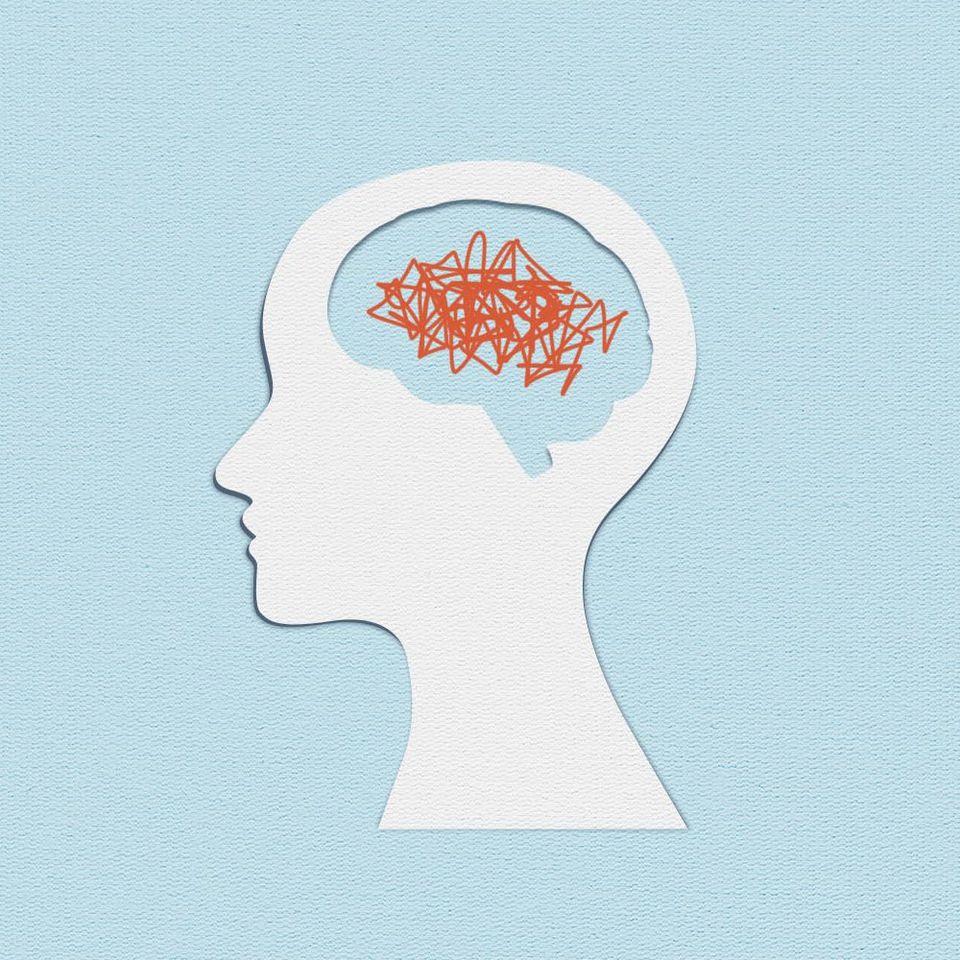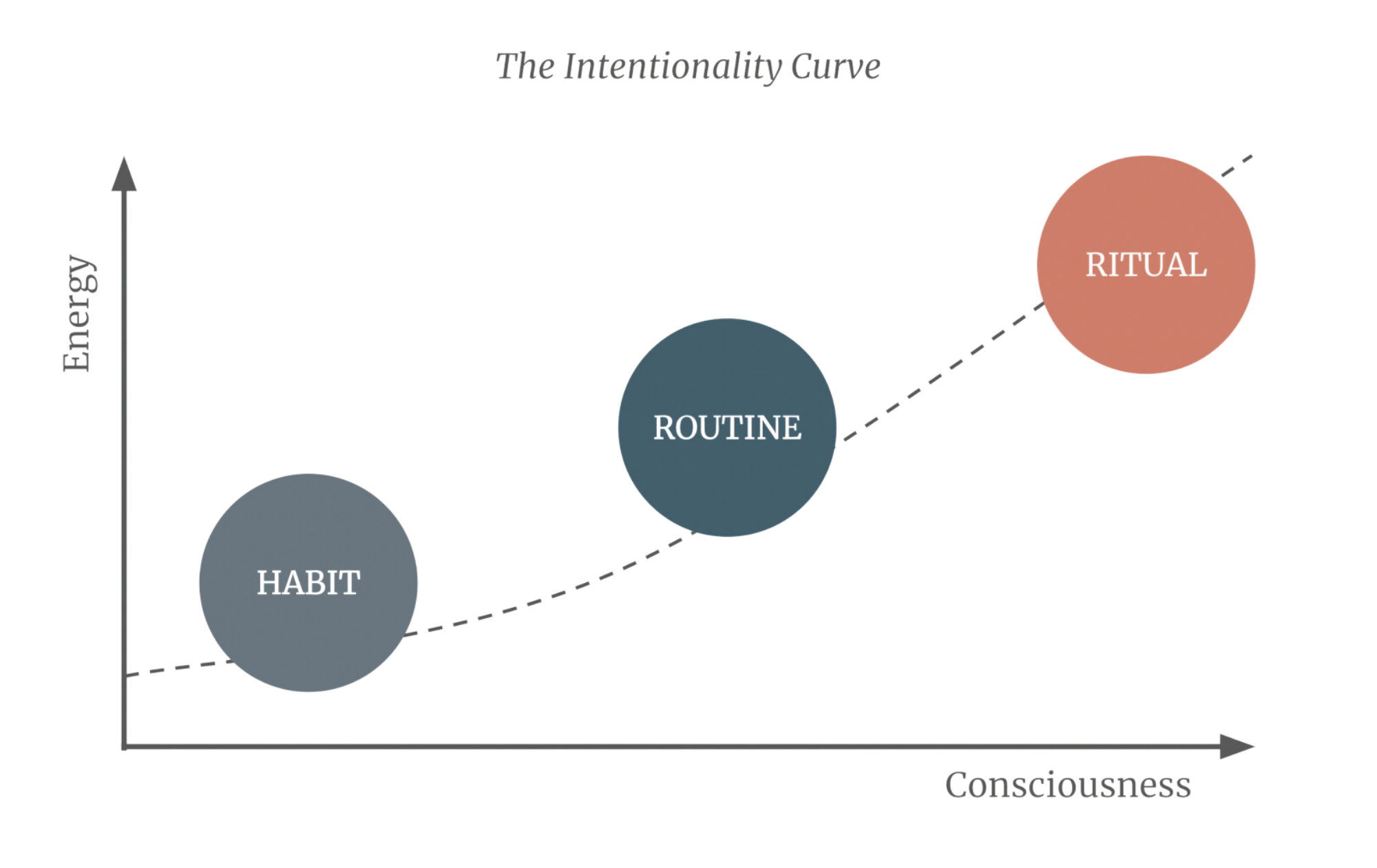Beyond Autopilot: How Intentionality in Everyday Actions Can Transform Your Life

In the hustle and bustle of our daily lives, we often find solace in the familiar - making our bed, sipping that first cup of coffee, or perhaps listening to a cherished podcast.
These seemingly mundane actions form the bedrock of our daily existence, providing a comforting consistency amidst the chaos.
But have you ever paused to ponder the depth of intentionality behind these actions?
Navigating the Spectrum of Consciousness
A staggering 60% of our daily actions, researchers suggest, are automated, devoid of conscious selection. This automation, while efficient, begs the question:
How can we elevate that percentage to live a life that is more intentional and conscious?
The secret lies in understanding and differentiating between habits, routines, and rituals, thereby designing a life where our daily actions allow us to traverse the entire spectrum of consciousness.
Habits and Routines: A Dichotomy of Consciousness
In the intricate tapestry of our daily lives, habits and routines weave a pattern that shapes our actions, decisions, and ultimately, our overall well-being. The subtle yet profound differences between habits and routines often go unnoticed, yet they play a pivotal role in determining the trajectory of our life’s path.
Let’s delve deeper into the dichotomy of consciousness that distinguishes these two concepts.
Habits: The Subconscious Pilots
Habits, often perceived as the silent pilots of our behavior, subtly navigate our actions without necessitating a conscious input. Imagine the last time you instinctively reached for a snack while watching a movie or automatically switched off the lights before leaving a room. These actions, triggered by specific cues like the start of a movie or exiting a space, didn’t demand a deliberate decision. They occurred almost reflexively, illustrating the subconscious nature of habits.
The formation of a habit involves a loop of cue, behavior, and reward.
A cue, such as stress, prompts a behavior (e.g., smoking a cigarette), which is then followed by a reward, like stress relief. Over time, this loop becomes ingrained in our neural pathways, enabling the action to occur with minimal conscious thought, thereby conserving our mental energy for other tasks.
Routines: The Conscious Commitments
Contrastingly, routines are conscious commitments that require a deliberate effort and intentional engagement. Consider your weekly gym sessions or your Sunday hikes.
These activities, while repeated, demand a conscious decision, a commitment to engage in them even when the initial motivation wanes. Unlike habits, routines do not operate on autopilot but necessitate a continuous input of conscious energy to sustain them.
Routines often start as deliberate practices aimed at achieving specific goals, such as enhancing physical fitness or fostering a connection with nature. They require a consistent effort to initiate and maintain, often involving a structured plan and a dedicated time slot in our daily schedules.
Navigating the Dichotomy
While habits and routines both encapsulate actions that are repeated regularly, the level of conscious thought involved in their execution starkly differs.
Habits, operating predominantly in the subconscious realm, allow us to perform actions almost effortlessly once they are ingrained.
Routines, on the other hand, demand our continuous conscious engagement, requiring a sustained effort to uphold them.
Understanding this dichotomy is crucial in navigating our path towards intentional living. It enables us to discern which actions we wish to transform into effortless habits and which ones we choose to engage in consciously as routines.
This discernment empowers us to craft a life that harmoniously blends ease with intentional action, weaving a tapestry that reflects our values, aspirations, and authentic selves.
In the journey towards a mindful and intentional life, recognizing and navigating through the dichotomy of habits and routines becomes a potent tool, enabling us to sculpt our actions, behaviors, and ultimately, our destiny, with conscious awareness and deliberate intent.
The Transformation from Routine to Ritual
Rituals, often associated with religious or spiritual activities, can be seen as routines that have been elevated by a heightened sense of purpose and mindfulness. They are actions in which we are fully engaged, focusing on the experience of the task rather than merely its completion.
This transformation from routine to ritual can be achieved by infusing mindfulness into our actions.
For instance, eating can become a ritual where you savor every bite, paying attention to textures and flavors, thereby enhancing the overall experience and satisfaction derived from the meal.
Living an Intentional Life with the Intentionality Curve

The concept of the Intentionality Curve is introduced as a means to scale our consciousness levels when performing daily actions. It prompts us to ask ourselves two pivotal questions:
- Which routines do I wish to convert into habits by diminishing my intentionality?
- Which routines do I desire to elevate into rituals by amplifying my intentionality?
These questions, when pondered upon regularly, can serve as a tangible practice of metacognition, assisting us in navigating away from a life lived on autopilot and steering us towards a life that is rich with intentionality and conscious living.
Example 1: The Morning Coffee Routine
1. Transforming Routine to Habit:
- Routine: Making a cup of coffee every morning.
- Intentionality Diminishing: To convert this routine into a habit, you might set up a coffee maker the night before and have it automatically brew at a certain time each morning. The cue (waking up to the aroma of coffee) and reward (enjoying a fresh cup) become intertwined, gradually forming a habit where you enjoy a cup of coffee without actively preparing it each morning.
2. Elevating Routine to Ritual:
- Routine: Drinking a cup of coffee every morning.
- Intentionality Amplifying: To elevate this routine into a ritual, you might choose to grind your coffee beans manually, paying attention to the sound of the grinder and the aroma of the freshly ground beans. You could mindfully pour the hot water, observing the coffee as it brews, and then savor every sip, fully immersing yourself in the experience. This mindful engagement transforms a simple coffee-drinking routine into a morning ritual that heightens your consciousness and presence.
Example 2: The Evening Workout
1. Transforming Routine to Habit:
- Routine: An evening workout session.
- Intentionality Diminishing: To morph this routine into a habit, establish a cue, such as changing into workout gear immediately after work, followed by a small reward post-workout, like a refreshing smoothie. Over time, the cue and reward system will foster an automatic response to engage in a workout without substantial conscious thought.
2. Elevating Routine to Ritual:
- Routine: An evening workout session.
- Intentionality Amplifying: To transform this routine into a ritual, immerse yourself fully in the workout experience. Feel each movement, observe your breath, and connect with your body. Perhaps begin with a mindful warm-up, setting an intention for the session, and conclude with a gratitude practice, thanking your body for its efforts. This mindful engagement elevates the workout from a physical routine to a holistic ritual.
Example 3: Weekly Meal Prepping
1. Transforming Routine to Habit:
- Routine: Prepping meals every Sunday for the week ahead.
- Intentionality Diminishing: To make this a habit, create a cue, such as setting a regular shopping day and time, followed by a reward, like enjoying a small treat after meal prepping is done. The cue and reward system will gradually build an automatic association, making meal-prepping an ingrained habit.
2. Elevating Routine to Ritual:
- Routine: Prepping meals every Sunday for the week ahead.
- Intentionality Amplifying: To elevate this routine into a ritual, immerse yourself in the process. Enjoy selecting fresh produce, appreciate the colors and textures of the ingredients, and be fully present during the chopping and cooking. Perhaps light a candle and play some music, making the meal prep a nourishing and mindful experience, thereby transforming it into a ritual.
By consciously deciding which routines to convert into habits and which to elevate into rituals, we navigate the Intentionality Curve, crafting a life that harmoniously blends automaticity with mindful, intentional actions.
This practice not only enriches our daily experiences but also steers us towards a life that is consciously and authentically lived.
Reflection and Application
As we traverse through the realms of habits, routines, and rituals, it’s imperative to reflect on our own journeys.
- Are there routines in your life that would benefit from being transformed into habits or rituals?
- How can you infuse more intentionality into your daily actions to enhance your level of consciousness and presence?
- In what ways can you utilize the Intentionality Curve to foster a life that is not merely lived on autopilot but is rich, meaningful, and intentionally crafted?
By pondering these questions and applying the insights gleaned from the Intentionality Curve, we embark on a journey towards a life that is not just lived but is consciously and intentionally experienced and savored.